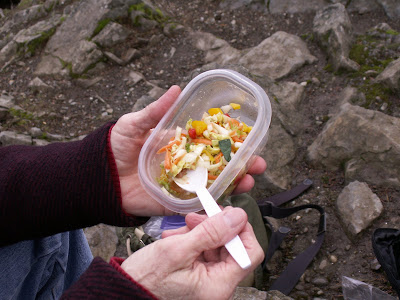 Last week Oprah had a special on diabetes, with Dr. Oz presenting all the latest information on 'the fastest growing disease in history'. Dr. Oz said it is ravaging the African-American community. 80 million Americans suffer from some aspect of the disease.
Last week Oprah had a special on diabetes, with Dr. Oz presenting all the latest information on 'the fastest growing disease in history'. Dr. Oz said it is ravaging the African-American community. 80 million Americans suffer from some aspect of the disease.It is a disease that gradually corrodes the blood vessels and disrupts the uptake of glucose into the cells. It happens so incrementally that it is estimated that 6 million Americans have it, and don't know it. Americans spend $170 billion per year on the impact and treatment of this disease.If it continues on course unabated, it will bankrupt our health-care industry. We will simply be unable to pay for health care.
Testing blood sugar levels is essential. Individuals that acquire Type 2 diabetes can forget that, even if they improve, they should test daily for glucose levels in the blood. If symptoms improve, they think the medications or testing is no longer necessary. They stop seeing the doctor, thinking that they are cured.
Nothing could be more deceptive! The damage to arteries is permanent. Once glucose is in the blood-stream it creates little micro tears which are repaired by a layer of cholesterol. Additional layers of cholesterol adhere to the first layer. As this builds up, plaque results, sometimes breaking off. When it does, if it lodges in the lung it results in a pulmonary embolism; if in the brain, a stroke can occur; in the heart, it precipitates a heart attack. That is why Dr. Oz, a heart surgeon, says most of his patients have diabetes.
Glucose is the primary culprit, blood sugar. When we think of sugar, we think of doughnuts and bread. But, even complex carbohydrates turn into glucose in the blood, things like grains, legumes, potatoes and rice. The fact that they are a whole food, containing fiber, factors into the glycemic release, which doesn't spike as swiftly as a packet of raisins or a banana. But, the glucose is there.
Having a diabetic spouse, I pay attention to the glycemic index of foods (the sugar surge), and also to the glycemic load (the amount and combination). Carbohydrates are essential for the brain, but must be moderate, and balanced with proteins and fiber, which sustain or slow down the glucose uptake. The best food combinations for him are low-fat proteins with colorful vegetables. Lots of colorful fiber, with nuts, yogurt, lean meat and fish, in moderation.
 So, I experimented last week, and made a spinach-pear salad.
So, I experimented last week, and made a spinach-pear salad. Steamed brussel sprouts with spinach and Syrian bread crumbs.
Steamed brussel sprouts with spinach and Syrian bread crumbs. And a wonderful old-fashioned coleslaw that we took as a snack on a recent hike.
And a wonderful old-fashioned coleslaw that we took as a snack on a recent hike.The next challenge on my husband's agenda is exercise - he just doesn't get enough, unless I pull him out onto a hike on the weekend. Diabetics must exercise at least 30 minutes a day. It impacts on glucose uptake, increasing the ability of insulin to work more effectively.
We've done a couple of hikes in the Green Mountain State Forest - the Wildcat Trail and the Gold Creek Trail. Both lead to the same panoramic view in Kitsap County.